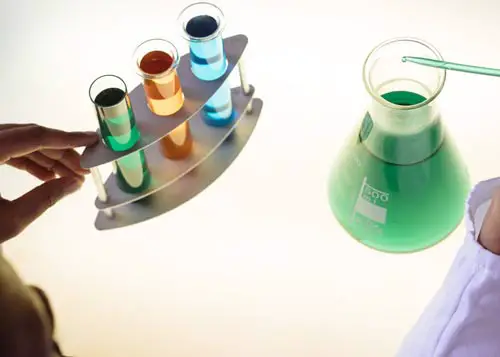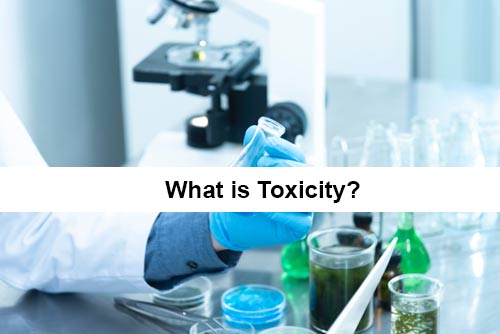Have you ever wondered what toxicity is? Toxicity can refer to anything that could be potentially harmful, including environmental toxins, food additives, plant toxins, and even certain medications. In this blog post, we’ll explore the concept of toxicity in detail and discuss the different types of toxicity that exist. We’ll also provide some tips on how to avoid toxicity in your everyday life so that you and your pet can stay as healthy as possible. Thanks for reading!
What is Toxicity?
When it comes to toxicity, it’s important to understand what it is, and the different types of toxicity that can occur. Toxicity can be defined as the harmful effect of a substance on an organism.
Toxicity is a degree of substance or a particular mixture of substances that can damage an organism. The effect of a toxic substance on an organism depends on the dose, the route of exposure, and the species and age of the organism. A chemical may be harmful if it is inhaled, ingested, or absorbed through the skin.
There are three main types of toxic entities, these are chemical, biological, and physical. Knowing the symptoms of toxicity is essential in order to prevent it from happening.
Types of Toxicity

There are a variety of toxicity dangers that you need to be aware of when it comes to products you use or consume. Each has its own set of adverse health effects. Toxicity can be the toxicity of a substance, typically referring to harmful or poisonous effects.
Let’s take a look at some types of toxicity that help you and your pet stay safe and healthy!
1. Acute Toxicity
Acute toxicity is the most harmful, as it occurs when a substance is taken in large doses and causes adverse health effects right away
If you experience any signs or symptoms of acute toxicity, it is important to get medical help as soon as possible. The main sources of acute toxicity are drugs, poisonings, and environmental hazards. Signs and symptoms of acute toxicity can include nausea, vomiting, diarrhea, and seizures.
2. Subchronic Toxicity
Subchronic toxicity is the most common form of toxicity, and it refers to short-term exposure to harmful chemicals. The effects of subchronic and acute toxicity can be cumulative over time, which can lead to serious health consequences. Acute toxicity is the most severe form of toxicity, and it refers to exposures that are very high in concentration or duration. Chronic toxicology refers to long-term exposure to harmful chemicals.
3. Chronic Toxicity
Chronic toxicity, on the other hand, is long-term exposure to a substance that can have adverse health effects over time.
It is a topic that deserves attention and understanding. It is when you are continuously exposed to a harmful substance, which can have long-term health consequences. There are three types of chronic toxicity – reproductive, neurological, and cardiovascular. Each has its own set of risks and consequences.
For example, Neurological toxicity might cause symptoms like memory loss or impaired coordination, while cardiovascular toxicity may lead to heart disease or stroke. It’s important to be aware of the signs and symptoms of each type of toxic exposure so that you can take the appropriate steps to address it!
4. Carcinogenicity
When it comes to carcinogenicity, it is important to understand the three types of toxicity – acute, chronic, and reproductive. Chronic toxicity is caused by exposure to harmful chemicals over a long period of time. This can lead to a number of health problems such as cancer. There are three types of toxicity – acute, chronic and reproductive. Reproductive toxicity can lead to birth defects or other health problems in unborn babies. Acute toxicity is caused by taking in too much of a harmful substance for a short period of time.
Carcinogenicity is the ability of a substance or exposure to cause cancer. The term can refer to the potential for a chemical or physical agent to cause cancer in humans, animals, or plants. Some agents are known to cause cancer in all three groups, while others are only carcinogenic to one or two.
5. Developmental Toxicity
There are a number of ways in which toxins can toxicity, both developmental and reproductive. Developmental toxicity is the most common form of toxicity, as it refers to the adverse effect that toxicants have on developing organs and systems. Neurological toxicity happens when toxins damage nerves or brain cells; Reproductive toxicity refers to when toxins are absorbed into the body during pregnancy or childbirth. It can also be caused by environmental pollutants, food and drink items etcetera.
6. Genetic Toxicity (Somatic Cells)
The toxic environment we live in is gradually killing us off. Not only do toxins adversely affect our physical health, but they can also cause genetic toxicity as well. Somatic cells are the cells of the body that carry out all its cellular functions – from reproduction to immune response. When these toxic agents enter your bloodstream, they can cause a wide range of diseases down the line, including cancer and even infertility.
In fact, many chronic medical conditions are linked with exposure to environmental toxins such as cigarette smoke and heavy metals! It’s important to be aware of this danger and take steps to avoid it by ensuring you’re not exposed to harmful substances in your everyday life or through contact with others. By doing so, you reduce your risk of developing any long-term illnesses caused by exposure to environmental toxins.
Types Of Toxicity Testing
Toxicity testing is a process of determining the adverse effects of a particular substance on living organisms. There are several different types of toxicity tests that can be performed, depending on the type of substance being tested and the desired information. The most common types of toxicity tests are :
- Acute lethality
- Subacute
- Subchronic
- Chronic toxicity/carcinogenicity
Frequently Asked Questions (FAQs)
Is Toxicity Caused By Food Additives and Medications?
Answer: When it comes to toxicity caused by food additives or medications, it is important to be aware of some of the most common offenders. Some of the most common medications that can lead to toxicity include beta-blockers, birth control pills, and cholesterol drugs. These medications often have side effects like headaches, flushing, abdominal pain, and dizziness. Food additives like MSG can also cause toxicity in the body. Symptoms of MSG toxicity can include headaches, flushing, abdominal pain, and dizziness.
Is Toxicity Caused By Plants?
Answer: When it comes to toxicity levels from plants, there are a few factors that can contribute. For example, the plant’s age, location, and how it is grown can all play a role. Additionally, some common types of high toxicity plants include yarrow, caladium, foxglove, and jade.
Always be wary of what you are planting in your garden – research first to make sure that the plant is safe for consumption or use. When planting in a garden, be sure to choose plants that are not toxic to humans. Some helpful resources for researching toxic plants include the US EPA website and the Plant Database at The PLANTS Database.
How Do You Test For Toxicity?
There are many ways to test for toxicity. The most common method is the LD50 test, which is used to determine the lethal dose of a substance. This test is usually conducted on animals, and it involves giving the substance to a group of animals and then observing the effects. Other methods of testing for toxicity include in vitro tests, which use cells or tissues from living organisms, and in vivo tests, which involve giving the substance to human volunteers.
Conclusion
Toxicity is a harmful effect that can occur when a substance is taken in high quantities. This can have a variety of effects, from causing adverse health effects to damaging the environment. In this blog, we have discussed the different types of toxicity and their effects on the body. Make sure to read through this blog to learn everything you need to know about toxicity!


